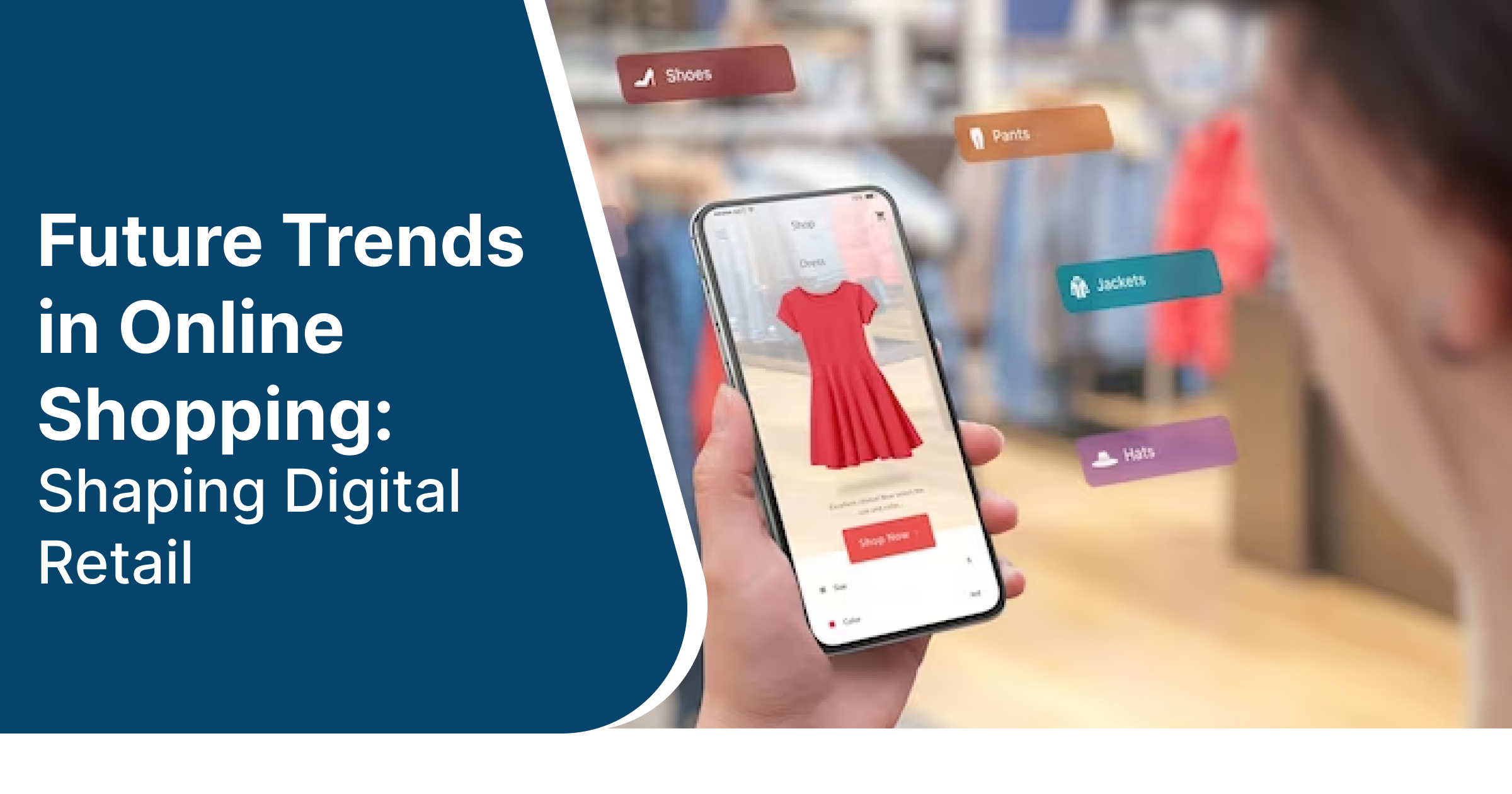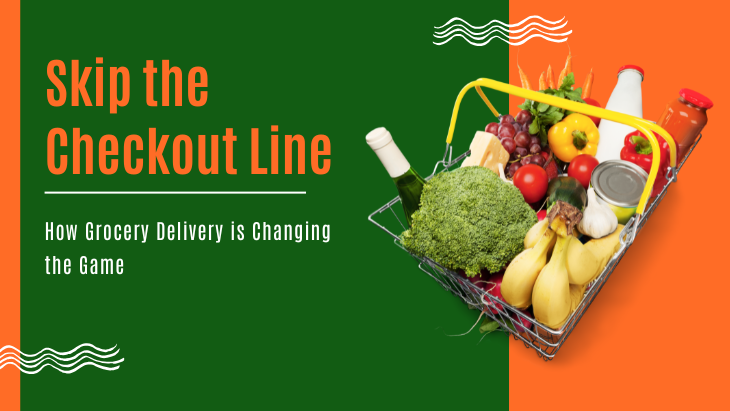In this article, we will delve into these future trends, exploring how they are set to shape digital retail and influence the way we shop online. The journey ahead is not just about the products we buy but also about the evolving landscape that makes our online shopping experiences more personalized, secure, and interconnected.
Key Trends Shaping the Future of Online Shopping
Future trends in online shopping are continuously evolving, driven by advancements in technology, changing consumer behaviors, and the dynamic nature of the digital retail landscape. Several key trends are expected to shape the future of online shopping:
AR & VR Revolutionize Online Shopping
Augmented Reality (AR) and Virtual Reality (VR) are cutting-edge technologies that are poised to transform the way we shop online. These advancements offer exciting new possibilities for consumers by providing virtual try-on features for a variety of products, including clothing, accessories, and furniture. AR allows users to overlay digital images onto the real world, whereas VR immerses users in an entirely virtual environment.
With AR and VR, consumers can now visualize products from the comfort of their own homes, enhancing their online shopping experience. For example, instead of guessing how a piece of clothing or an accessory might look, users can virtually try them on using an app or device. This allows them to see how the product fits, how it complements their personal style, and how it integrates into their existing environment. Similarly, shoppers can test out furniture virtually and get a sense of how it would look and fit in their own living spaces. These technologies bridge the gap between the online and physical shopping experience, empowering consumers to make more informed decisions and increasing their confidence in the products they choose to purchase.
Personalized Online Shopping: AI & ML
Artificial Intelligence (AI) and Machine Learning (ML) have revolutionized the online shopping experience by personalizedizing the journey for each individual. Through the use of advanced algorithms, AI and ML technologies are able to analyze user behavior, preferences, and purchase history. This information is then utilized to provide tailored product recommendations, ultimately enhancing customer satisfaction and engagement.
By leveraging AI and ML, online retailers are able to gain a deep understanding of their customers. These technologies can identify patterns and trends in user data, allowing for the creation of personalized shopping experiences. For example, they can determine which products a customer is likely to be interested in based on their previous purchases or browsing behavior. This enables the retailer to present customized product suggestions to each user, increasing the chances of them finding exactly what they are looking for and making a purchase.
Furthermore, AI and ML can also predict future purchasing behaviors based on historical data. By recognizing patterns in customer preferences, these technologies can anticipate needs and create proactive recommendations. This level of personalization not only enhances customer satisfaction by saving time and effort in searching for desired products but also increases customer engagement and loyalty, as users feel understood and valued by the retailer.
Overall, AI and ML have significantly improved the online shopping journey by tailoring it to each individual's preferences and needs. The ability to analyze user behavior, preferences, and purchase history allows for personalized product recommendations and a more engaging shopping experience. As these technologies continue to advance, the level of personalization in online shopping will only continue to increase, further revolutionizing the way we shop.
Voice Commerce: Revolutionizing Shopping with Voice Commands
Voice commerce, also known as v-commerce, is reshaping the way we shop by allowing consumers to make purchases using voice commands. This technology utilizes voice recognition and artificial intelligence to understand and process the user's spoken instructions, enabling them to navigate through product catalogs, compare prices, and complete transactions seamlessly. With the growing popularity of virtual assistants such as Amazon's Alexa and Google Assistant, voice commerce is becoming increasingly integrated into our daily lives, providing a convenient and hands-free shopping experience.
Voice commerce offers numerous benefits to both consumers and businesses. For consumers, it eliminates the need for traditional inputs such as typing or clicking, making shopping faster and more efficient. It also allows for multitasking, as users can simply dictate their shopping needs while engaging in other activities. Additionally, voice commerce provides businesses with valuable customer insights and personalized recommendations based on previous purchases or preferences. With its potential to simplify and enhance the shopping experience, voice commerce is revolutionizing the way we buy goods and services.
Social Commerce:
Social media platforms are increasingly becoming shopping destinations. Integrated shopping features allow users to discover and buy products directly through social media channels, blurring the lines between social networking and e-commerce.
Sustainability and Ethical Shopping
Consumers are becoming more conscious of the environmental and ethical impact of their purchases. Online retailers are responding by emphasizing sustainable practices, eco-friendly packaging, and transparent supply chains to attract environmentally conscious shoppers.
Mobile Shopping Dominance
The dominance of mobile devices in online shopping is expected to continue. Retailers are optimizing their websites and apps for mobile platforms, and mobile payment solutions are becoming more prevalent, providing a seamless and efficient shopping experience.
Contactless Payments Rise
During the COVID-19 pandemic, the use of contactless payment methods surged as people sought safer and more convenient ways to complete transactions. Mobile wallets, such as Apple Pay and Google Pay, gained popularity as they allow users to make payments easily through their smartphones, eliminating the need for physical cash or cards. These digital currencies offer a seamless checkout experience, reducing the time spent in stores and minimizing physical contact between customers and retailers. Moreover, contactless payments are highly secure, as they typically encrypt personal information and require authentication methods such as fingerprints or facial recognition to complete a transaction.
The accelerated adoption of contactless payment options has revolutionized the way we pay for goods and services. Beyond mobile wallets, other contactless payment methods have also emerged, including QR code payments and NFC-enabled cards. QR code payments enable customers to simply scan a code displayed at the point of sale, while NFC-enabled cards allow users to tap their cards against payment terminals to complete a transaction. These contactless options offer a faster and more convenient checkout process, reducing the need for physical interaction and promoting a hygienic shopping experience. As the world gradually recovers from the pandemic, it is likely that contactless payments will continue to be the preferred choice for many individuals and businesses due to their convenience, security, and overall efficiency.
Subscription Services
Subscription-based models are gaining popularity in online retail. Consumers subscribe to receive regular shipments of products they use frequently, providing convenience and predictability for both the consumer and the retailer.
Dynamic Pricing
AI-driven dynamic pricing models adjust product prices in real-time based on various factors such as demand, competition, and user behavior. This allows retailers to optimize pricing strategies for maximum profitability.
Personalized Customer Experiences
Providing a personalized and seamless customer experience is a priority for online retailers. Customized landing pages, targeted promotions, and interactive content contribute to creating a more engaging and relevant shopping experience.
These trends collectively reflect the ongoing evolution of online shopping, with technology playing a pivotal role in enhancing customer convenience, personalization, and overall satisfaction. As technology continues to advance, the future of online shopping is likely to bring even more innovative and transformative changes to the digital retail landscape.
Conclusion
In conclusion, the future of online shopping is likely to be characterized by innovations that enhance the customer experience, prioritize sustainability, and leverage advanced technologies to streamline processes from browsing to delivery. It's important for businesses to stay adaptable and embrace these trends to remain competitive in the evolving digital retail landscape.
Frequently asked questions (FAQs)
Q1: What is social commerce, and how does it differ from traditional e-commerce?
A1: Social commerce refers to the integration of shopping features directly into social media platforms, allowing users to discover, explore, and purchase products without leaving the platform. Unlike traditional e-commerce, social commerce leverages the social aspect of online interactions to facilitate buying and selling.
Q2: How does augmented reality (AR) enhance the online shopping experience?
A2: Augmented reality enhances online shopping by allowing users to virtually try on products or visualize them in their real-world environment before making a purchase. This technology provides a more immersive and interactive experience, helping customers make informed decisions.
Q3: Why is sustainability becoming a significant factor in online shopping trends?
A3: Increasing environmental awareness has led to a growing demand for eco-friendly and sustainable products. Consumers are now more conscious of the environmental impact of their purchases, and retailers are adapting by offering transparent supply chains and sustainable practices.
Q4: What are the key benefits of voice commerce in online shopping?
A4: Voice commerce enables users to make purchases and interact with virtual shopping assistants using voice commands. The key benefits include hands-free convenience, faster transactions, and a more accessible shopping experience, especially for those who may have difficulty using traditional interfaces.
Q5: How are mobile shopping and mobile payment methods evolving in the digital retail landscape?
A5: With the increasing use of smartphones, mobile shopping is expected to dominate the e-commerce landscape. Retailers are optimizing their platforms for mobile devices, and mobile payment methods are becoming more prevalent, offering secure and convenient options for completing transactions.
Q6: How does blockchain technology contribute to the security of online transactions?
A6: Blockchain technology provides a secure and transparent ledger that reduces the risk of fraud in online transactions. It ensures the authenticity of products, enhances data security, and builds trust among customers by offering a tamper-resistant record of transactions.
Q7: What role do subscription-based models play in the future of online shopping?
A7: Subscription-based models involve customers subscribing to regular doorstep deliveries of products or services. This approach enhances customer loyalty, provides a predictable revenue stream for businesses, and offers consumers a convenient and personalized way to receive goods or services regularly.
Q8: How are retailers addressing the demand for faster delivery options?
A8: Retailers are addressing the demand for faster delivery by offering same-day or even one-hour delivery services. This trend emphasizes the importance of efficient and reliable logistics, often leveraging advanced technologies such as automation and artificial intelligence in the supply chain.
Q9: Why is data privacy and security crucial in the context of online shopping?
A9: Data privacy and security are crucial in online shopping to protect customer information from unauthorized access and to comply with regulations. Stricter measures are being implemented to safeguard sensitive data, ensuring a secure and trustworthy online shopping environment.
Q10: How does artificial intelligence contribute to personalization in online shopping?
A10: Artificial intelligence algorithms analyze user behavior, preferences, and past purchases to provide personalized recommendations in online shopping. This technology enhances the overall shopping experience by tailoring product suggestions to individual customers, increasing the likelihood of customer satisfaction and repeat business.







Post Comments